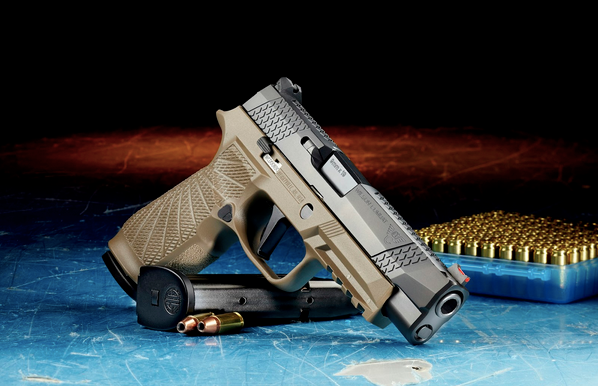Introducing firearms into your household is a decision that should never be taken lightly. The presence of guns in a home can fundamentally alter its safety landscape, necessitating a heightened level of responsibility and awareness from all occupants. This article is not solely about the right to own and bear arms but also about ensuring that ownership comes with an unwavering commitment to safety and education. Before crossing this significant threshold, it's crucial to contemplate the myriad of factors that contribute to safely integrating firearms into your living environment. From understanding local laws and regulations to securing proper storage and advocating for comprehensive training, this guide aims to provide essential insights and actionable advice for those considering bringing guns into their homes.

Securing Proper Storage Solutions
The importance of secure firearm storage cannot be overstated. Safe storage solutions protect against unauthorized access, theft, and accidents, particularly in households with children. Options range from trigger locks to biometric gun safes, each with its advantages and considerations. Selecting the right storage mechanism is a critical step in responsibly integrating firearms into your home.
In addition to choosing a storage method, it is also crucial to establish safe handling practices. This includes unloading firearms before storing them and periodically checking that storage devices remain functional and secure. Implementing these practices ensures that safety is a constant priority and helps prevent tragic accidents. From underbed safes to gun cabinets, there is a multitude of storage options available to fit your specific needs and budget. It's important to carefully research and select the best storage solution for your household.
Understanding Local Laws and Regulations
It's imperative to begin with a thorough understanding of the legal framework that governs firearm ownership in your area. Each jurisdiction has its unique set of laws, including but not limited to, licensing requirements, background checks, and restrictions on certain types of firearms. Familiarizing yourself with these regulations is not only about compliance but also reflects a responsible approach to gun ownership.
Beyond the basic legal requirements, consider engaging with local law enforcement or gun safety organizations. These entities often provide valuable insights and resources that can help you navigate the complexities of lawful firearm possession. They may offer clarity on nuances that aren't immediately apparent in written laws, further ensuring that you're fully informed before making any decisions.
Advocating for Comprehensive Training
Committing to ongoing education and training is essential for any firearm owner. Initial training should cover the fundamentals of safe handling, operation, and maintenance. However, learning shouldn't stop there. Advanced courses can offer deeper insights into defensive use, accuracy improvement, and stress response, amongst other topics.
Training also extends to all household members, regardless of whether they plan to use the firearms. Understanding basic safety protocols, recognizing when a gun is loaded, and knowing what to do if they encounter an unsecured firearm can save lives. This comprehensive approach strengthens the safety culture within your home.
Engaging in Open Dialogue
Open and honest communication about the responsibilities and risks associated with firearm ownership is paramount. This dialogue should involve all family members, providing space for questions, concerns, and education. Addressing topics such as the reason for bringing firearms into the home and outlining clear rules of access and safety can mitigate misunderstandings and foster a respectful environment.
Such discussions can also serve as a gauge for readiness. If consensus on safety practices and principles cannot be reached, it may indicate the need for further deliberation or adjustments to the plan. The goal is to ensure that everyone in the household is comfortable and aligned with the presence of firearms.
Planning for Mental Health and Emergency Situations
A comprehensive safety strategy includes planning for the unforeseen. This involves recognizing the impact that firearms can have on mental health and preparing for how to address potential emergencies. Resources should be readily available to all household members, including contact information for mental health professionals familiar with the unique dynamics of homes with firearms.
In emergency situations, having a clear, practiced plan in place can make a significant difference. This includes understanding when and how to safely use a firearm in self-defense, familiarizing oneself with the legal implications of such actions, and knowing whom to call immediately afterward. Preparedness and awareness are key components of responsibly owning and storing firearms in your home.

The decision to bring guns into your home requires careful consideration of multiple factors. Each household is unique, and it's essential to approach this decision with a full understanding of local laws, secure storage solutions, comprehensive training, open dialogue, and plans for potential emergencies. By doing so, you can ensure that firearm ownership in your home aligns with the highest standards of safety and responsibility. Let's continue to prioritize safety and education as we exercise our Second Amendment rights.



